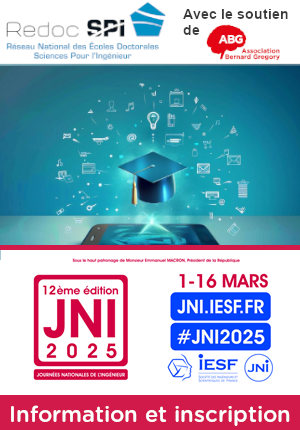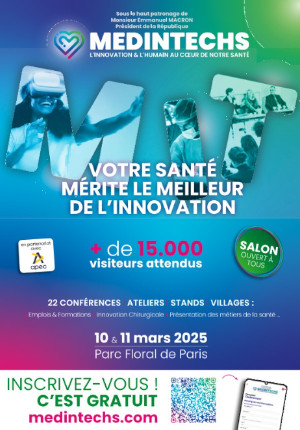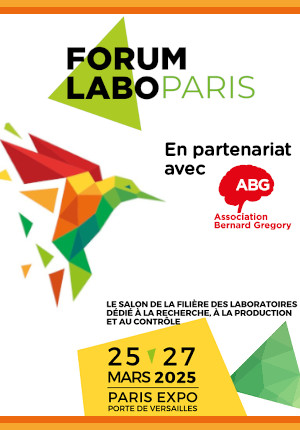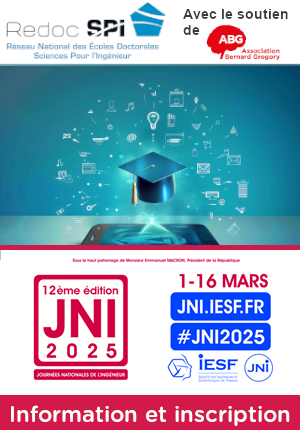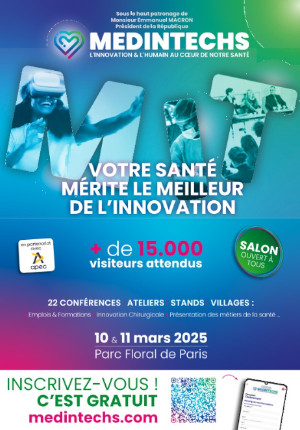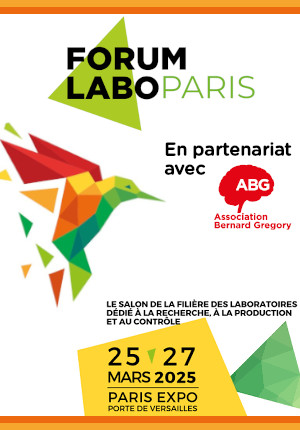Solidification des alliages en lévitation électromagnétique avec un champ DC surimposé // Solidification of alloys in electromagnetic levitation with a superposed DC magnetic field
|
ABG-128750
ADUM-61569 |
Thesis topic | |
| 2025-02-19 | Public funding alone (i.e. government, region, European, international organization research grant) |
Université Grenoble Alpes
Saint Martin d'Hères cedex - France
Solidification des alliages en lévitation électromagnétique avec un champ DC surimposé // Solidification of alloys in electromagnetic levitation with a superposed DC magnetic field
- Electronics
lévitation électromagnétique, solidification des alliages, champ magnétique continue (DC), force magnéto-thermoélectrique, brassage électromagnétique, ségrégation
Electromagnetic levitation, alloys solidification, Continuous (DC) magnetic field, Magneto-Thermoelectric force, electromagnetic stirring, segregation
Electromagnetic levitation, alloys solidification, Continuous (DC) magnetic field, Magneto-Thermoelectric force, electromagnetic stirring, segregation
Topic description
La lévitation – électromagnétique (EM), acoustique, aérodynamique, etc – est un environnement permettant de manipuler un échantillon, solide ou liquide, sans contact. Au sein d'une atmosphère inerte contrôlée, cet environnement permet d'éviter la contamination des échantillons. En particulier, la lévitation EM est utilisée pour la synthèse des matériaux, pour les mesures des propriétés thermochimiques où dans les études de transitions de phases qui sont réalisées en microgravité ou dans les conditions terrestres. Or, dans les conditions terrestres, la force de Lorentz, qui permet la lévitation, crée aussi un écoulement assez intense au sein de l'échantillon liquide. D'un côté, ce brassage électromagnétique peut être favorable car il intensifie le transport des espèces chimiques et/ou de la chaleur dans l'échantillon et peut quasiment homogénéiser la distribution de ces derniers. D'autre part, les conditions diffusives, qui sont souvent souhaitées pour réaliser certaines études ou faire preuve d'une théorie, ne sont pas atteintes à cause du brassage EM. Cependant, un moyen assez connu pour freiner l'écoulement d'un liquide conducteur de l'électricité est un champ magnétique continu (champ magnétique DC). Ainsi, l'idée principale du projet est portée sur les études de la solidification des échantillons de métaux liquides en état de lévitation EM et sous champ magnétique DC. Nous allons effectuer la comparaison de la structure et de la composition des échantillons d'alliages métalliques solidifiés de façon contrôlable sans et avec l'application d'un champ DC afin d'identifier l'effet de l'écoulement de fluide et de comprendre s'il y a un effet de freinage de la part de champ DC. Il est possible que la force Magneto-Thermoélectrique apparaisse quand le champ DC est utilisé. Cette force peut créer un mouvement du liquide à petit échelle, près de l'interface solide-liquide, et aussi agir directement sur la phase solide en alternant de façon remarquable la microstructure de l'échantillon solidifié.
------------------------------------------------------------------------------------------------------------------------------------------------------------------------
------------------------------------------------------------------------------------------------------------------------------------------------------------------------
Levitation - electromagnetic (EM), acoustic, aerodynamic, etc - is an environment which allows to handle a sample, in solid or liquid state, without contact. Within a controlled inert atmosphere, this environment prevents sample contamination. In particular, EM levitation is used to synthesize materials, measure thermochemical properties or study phase transitions in microgravity or in terrestrial conditions.
Under terrestrial conditions, the Lorentz force that enables levitation also creates a rather intense flow within the liquid sample. On the one hand, this electromagnetic mixing can be favorable because it intensifies the transport of chemical species and/or heat in the sample and can virtually homogenize their distribution. On the other hand, diffusive conditions, which are often intended for certain studies or to prove a theoretical hypothesis, are not attained because of the EM stirring. However, a well-known means of slowing down the flow of an electrically conductive liquid is a continuous magnetic field (DC magnetic field). Thus, the main idea of the project is to study the solidification of liquid metal samples in EM levitation and under a DC magnetic field. We are going to compare the structure and composition of the metal alloy samples solidified with a controlled cooling rate without and with the application of the DC magnetic field in order to identify the effect of the fluid flow and to understand if the damping effect of the DC field is manifested. It is possible that Magneto-Thermoelectric force appears when the DC magnetic field is used. This force can create liquid motion at a small scale, near the solid-liquid interfaces, but also act directly on the solid phase making significant modification of the solid structure.
------------------------------------------------------------------------------------------------------------------------------------------------------------------------
------------------------------------------------------------------------------------------------------------------------------------------------------------------------
Début de la thèse : 01/10/2025
------------------------------------------------------------------------------------------------------------------------------------------------------------------------
------------------------------------------------------------------------------------------------------------------------------------------------------------------------
Levitation - electromagnetic (EM), acoustic, aerodynamic, etc - is an environment which allows to handle a sample, in solid or liquid state, without contact. Within a controlled inert atmosphere, this environment prevents sample contamination. In particular, EM levitation is used to synthesize materials, measure thermochemical properties or study phase transitions in microgravity or in terrestrial conditions.
Under terrestrial conditions, the Lorentz force that enables levitation also creates a rather intense flow within the liquid sample. On the one hand, this electromagnetic mixing can be favorable because it intensifies the transport of chemical species and/or heat in the sample and can virtually homogenize their distribution. On the other hand, diffusive conditions, which are often intended for certain studies or to prove a theoretical hypothesis, are not attained because of the EM stirring. However, a well-known means of slowing down the flow of an electrically conductive liquid is a continuous magnetic field (DC magnetic field). Thus, the main idea of the project is to study the solidification of liquid metal samples in EM levitation and under a DC magnetic field. We are going to compare the structure and composition of the metal alloy samples solidified with a controlled cooling rate without and with the application of the DC magnetic field in order to identify the effect of the fluid flow and to understand if the damping effect of the DC field is manifested. It is possible that Magneto-Thermoelectric force appears when the DC magnetic field is used. This force can create liquid motion at a small scale, near the solid-liquid interfaces, but also act directly on the solid phase making significant modification of the solid structure.
------------------------------------------------------------------------------------------------------------------------------------------------------------------------
------------------------------------------------------------------------------------------------------------------------------------------------------------------------
Début de la thèse : 01/10/2025
Funding category
Public funding alone (i.e. government, region, European, international organization research grant)
Funding further details
Concours pour un contrat doctoral
Presentation of host institution and host laboratory
Université Grenoble Alpes
Institution awarding doctoral degree
Université Grenoble Alpes
Graduate school
510 I-MEP² - Ingénierie - Matériaux, Mécanique, Environnement, Energétique, Procédés, Production
Candidate's profile
Profil en science des matériaux et/ou ingénierie des procédés, avec des notions de base en méthodes numériques. Le candidat doit démontrer une aptitude au montage des dispositifs, à l'instrumentation et à l'expérimentation. Des connaissances de base de la théorie du transfert de processus (chaleur, masse) et de l'électromagnétisme seraient utiles.
Profile in materials science and/or process engineering, with basic notions of numerical methods. The candidate has to demonstrate an aptitude for the development of the setup, instrumentation and experimentation. Basic knowledge of process transfer theory (heat, mass) and electromagnetism would be relevant.
Profile in materials science and/or process engineering, with basic notions of numerical methods. The candidate has to demonstrate an aptitude for the development of the setup, instrumentation and experimentation. Basic knowledge of process transfer theory (heat, mass) and electromagnetism would be relevant.
2025-05-12
Apply
Close
Vous avez déjà un compte ?
Nouvel utilisateur ?
More information about ABG?
Get ABG’s monthly newsletters including news, job offers, grants & fellowships and a selection of relevant events…
Discover our members
 TotalEnergies
TotalEnergies  ONERA - The French Aerospace Lab
ONERA - The French Aerospace Lab  MabDesign
MabDesign  Aérocentre, Pôle d'excellence régional
Aérocentre, Pôle d'excellence régional  Institut Sup'biotech de Paris
Institut Sup'biotech de Paris  Nokia Bell Labs France
Nokia Bell Labs France  CASDEN
CASDEN  ANRT
ANRT  Groupe AFNOR - Association française de normalisation
Groupe AFNOR - Association française de normalisation  CESI
CESI  Institut de Radioprotection et de Sureté Nucléaire - IRSN - Siège
Institut de Radioprotection et de Sureté Nucléaire - IRSN - Siège  PhDOOC
PhDOOC  ADEME
ADEME  MabDesign
MabDesign  SUEZ
SUEZ  Ifremer
Ifremer  Laboratoire National de Métrologie et d'Essais - LNE
Laboratoire National de Métrologie et d'Essais - LNE  Tecknowmetrix
Tecknowmetrix  Généthon
Généthon



